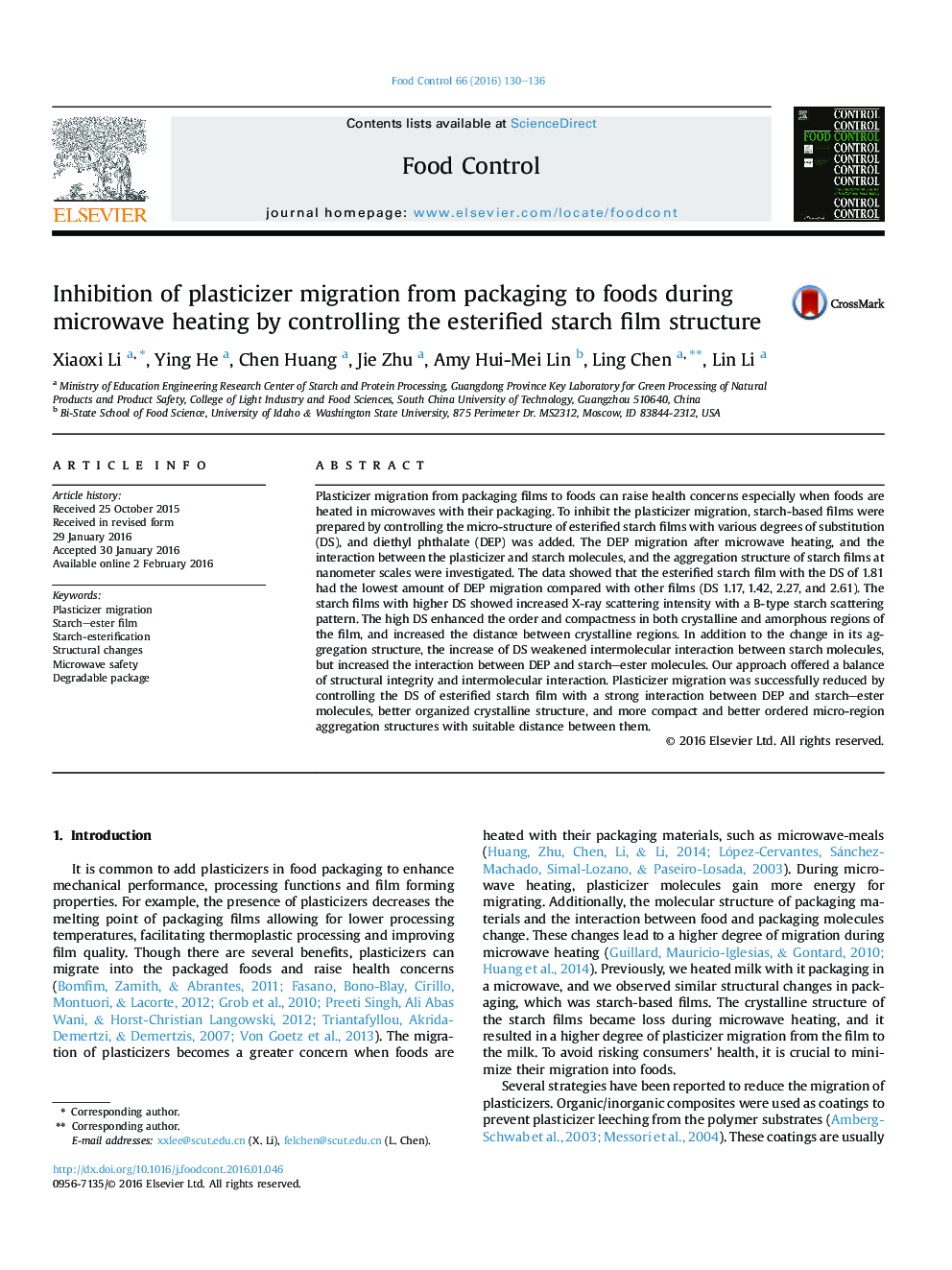| Article ID | Journal | Published Year | Pages | File Type |
|---|---|---|---|---|
| 4559183 | Food Control | 2016 | 7 Pages |
•Plasticizer migration was inhibited by controlling the DS of starch–ester films.•The starch–ester film with the DS of 1.81 was the most effective for limiting migration.•Multi-scale structure of esterified starch film affected DEP migration.•Stronger molecular interaction and better-organized crystallites prevented DEP migration.•Ordered micro-region structures with suitable distance inhibited DEP migration.
Plasticizer migration from packaging films to foods can raise health concerns especially when foods are heated in microwaves with their packaging. To inhibit the plasticizer migration, starch-based films were prepared by controlling the micro-structure of esterified starch films with various degrees of substitution (DS), and diethyl phthalate (DEP) was added. The DEP migration after microwave heating, and the interaction between the plasticizer and starch molecules, and the aggregation structure of starch films at nanometer scales were investigated. The data showed that the esterified starch film with the DS of 1.81 had the lowest amount of DEP migration compared with other films (DS 1.17, 1.42, 2.27, and 2.61). The starch films with higher DS showed increased X-ray scattering intensity with a B-type starch scattering pattern. The high DS enhanced the order and compactness in both crystalline and amorphous regions of the film, and increased the distance between crystalline regions. In addition to the change in its aggregation structure, the increase of DS weakened intermolecular interaction between starch molecules, but increased the interaction between DEP and starch–ester molecules. Our approach offered a balance of structural integrity and intermolecular interaction. Plasticizer migration was successfully reduced by controlling the DS of esterified starch film with a strong interaction between DEP and starch–ester molecules, better organized crystalline structure, and more compact and better ordered micro-region aggregation structures with suitable distance between them.
